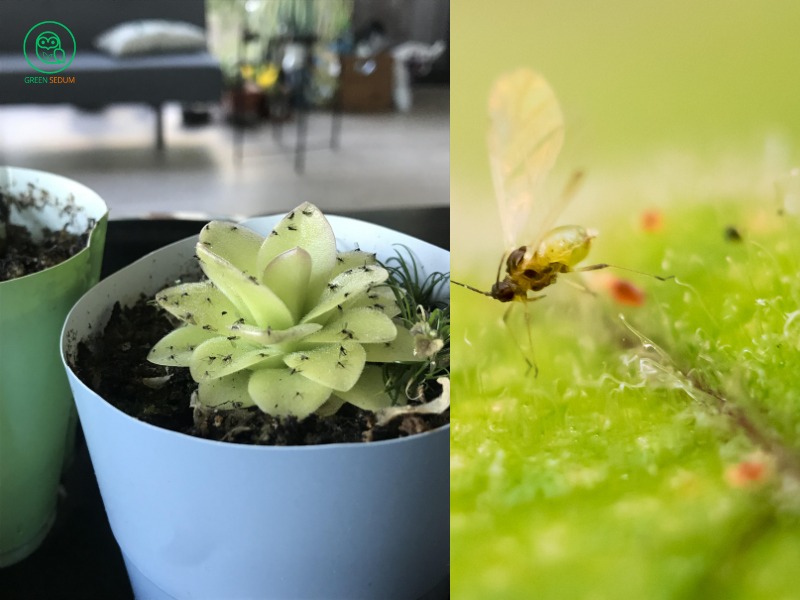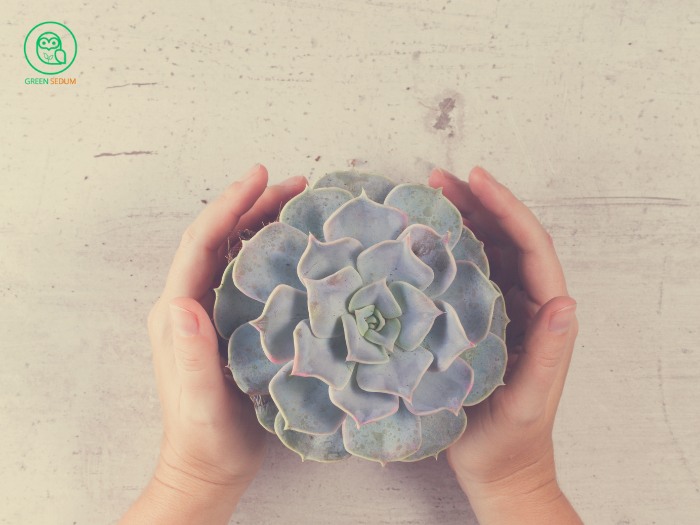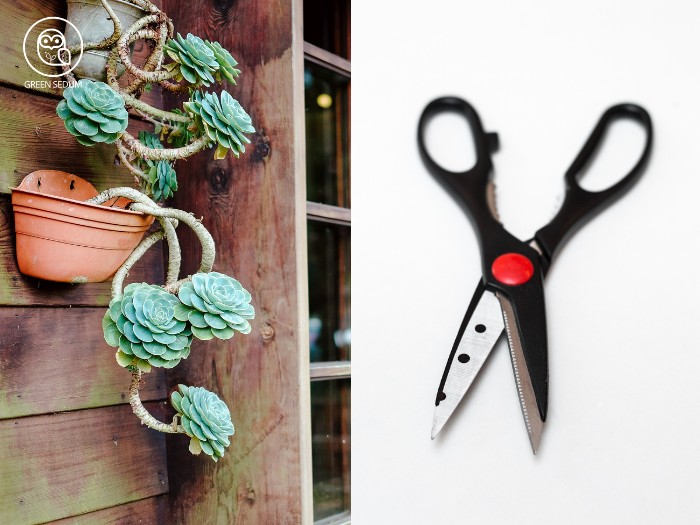One common issue that succulent growers often face is the presence of gnats on succulents. These tiny insects thrive in moist soil and can quickly become a serious problem if not addressed promptly. Gnats not only cause annoyance but can also harm the health of the plants by damaging their root systems.
Understanding the causes behind the presence of gnats and implementing proper preventative measures is crucial to protect succulents from these pests.
1. Causes of Gnats on Succulents
Environmental Conditions Favoring Gnats
Gnats tend to appear and thrive in conditions that are conducive to their development. High moisture levels and poor ventilation are key factors that promote their presence. When succulents are placed in areas with high humidity, such as near windows or in enclosed spaces, the likelihood of gnat infestation increases significantly. Additionally, using poorly draining pots or overwatering can create an ideal environment for gnats to breed.
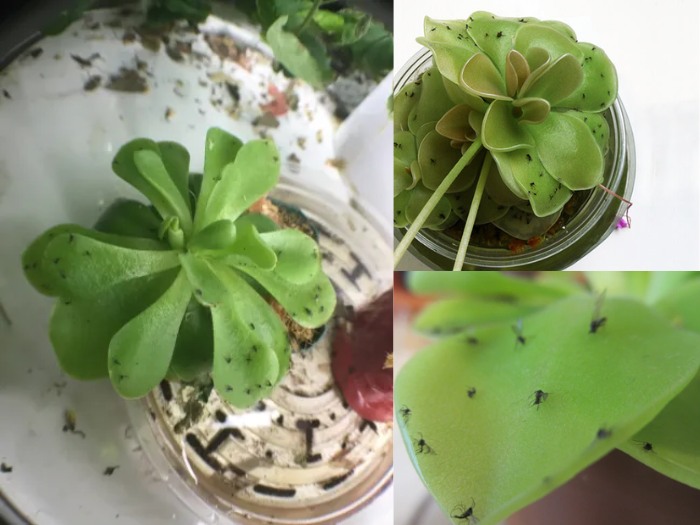
Consequences
Moist soil provides the perfect breeding ground for gnats. These insects are attracted to wet soil where they lay their eggs, which then hatch into larvae. If the soil is not allowed to dry out completely between waterings, it becomes an ideal habitat for gnats. The larvae can damage the root systems of succulents, leading to poor plant growth and weakened health.
Therefore, maintaining dry and well-ventilated soil is crucial to preventing gnats and protecting succulents from negative impacts.
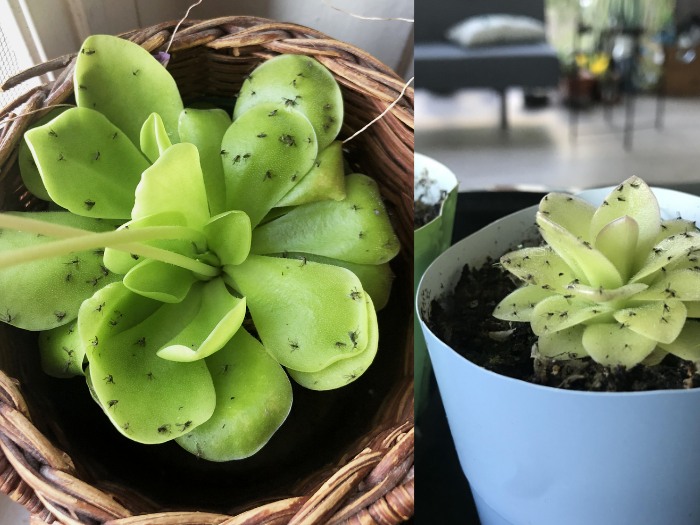
2. Preventive Measures for Gnats on Succulents
Choose well-draining soil
To prevent gnats on succulents, selecting soil with excellent drainage is crucial. Use a soil mix that includes sand, perlite, or pumice to ensure proper aeration and avoid water retention. Steer clear of garden soil or other types of soil that hold too much moisture, as this can create the damp environment where gnats on succulents thrive.
Control watering
Water your succulents only when the soil is fully dry to prevent mold and the development of larvae from gnats on succulents. Ensure your plants are placed in well-lit areas to speed up the drying process, reducing the likelihood of moisture buildup. Proper watering practices are essential in keeping gnats on succulents at bay.
Manage the growing environment
Maintaining good airflow around your succulents helps reduce gnat infestations. Make sure the area where your succulents are growing is well-ventilated, allowing air to circulate freely. Regularly clean up any fallen leaves or plant debris to prevent gnats on succulents from finding a place to breed.
By adopting these preventive measures, you can create an environment that discourages gnats on succulents, ensuring your plants stay healthy and gnat-free.
>>>> See related content:
- Can Succulent Leaves Falling Off Be Repurposed for New Growth?
- How to Care for Succulents: Watering, Lighting, and Soil Tips
3. Methods to Eliminate Gnats
3.1. Apple Cider Vinegar Traps

Apple cider vinegar traps are an effective and easy method to control gnats. To create a trap, pour a few tablespoons of apple cider vinegar into a small plastic cup and add a few drops of dish soap. Cover the cup with plastic wrap and poke a small hole to allow gnats to enter. The sweet smell of the vinegar attracts the gnats, while the soap reduces their ability to fly and traps them. Place the trap near your succulents for effective control.
3.2. Diatomaceous Earth
Diatomaceous earth is another natural solution to kill gnats. Sprinkle a thin layer of diatomaceous earth on the soil surface. When gnats come into contact with the powder, it damages their exoskeletons and dehydrates them, leading to their quick demise. Diatomaceous earth also helps control other types of insects.
3.3. Other Natural Solutions
In addition to the above methods, several other natural remedies can help eliminate gnats. One option is to spray a mixture of lemon juice and dish soap onto the soil surface and around the plants. The lemon scent combined with the soap can deter gnats. Another approach is to place a piece of overripe banana peel near the plant, as the decomposing banana attracts and kills gnats effectively. These methods are eco-friendly, easy to apply, and cost-effective.
3.4. Maintaining Proper Soil Moisture
To keep the soil at an appropriate moisture level, ensure your succulents are planted in well-draining soil that doesn’t retain excessive moisture. Water your plants only when the topsoil is completely dry, and avoid keeping the soil constantly wet. Use a moisture meter or check manually to gauge soil moisture. Proper moisture management not only promotes healthy plant growth but also reduces the risk of gnats and other pests.
>>> Explore this topic: Step-by-Step Guide on How to Revive a Succulent After Overwatering
4. FAQs
Do gnats affect succulents?
Gnats don’t directly harm succulents, but they can cause serious problems if left unchecked. These pests often breed in moist soil, where they can damage roots and weaken plant health. While gnats don’t bite or damage leaves, their presence can lead to fungal growth and other diseases.
How can I identify gnats on succulents?
Gnats are usually easy to spot due to their small size and dark color. They tend to fly around the plants, especially when the soil is overly moist or there is decaying plant matter. Look for these tiny flies around your pots or in your home to identify an infestation.
How can I prevent gnats in the soil of my succulents?
To prevent gnats, it’s crucial to keep succulent soil dry. Use well-draining soil and avoid overwatering. Place your plants in a location with ample light to help the soil dry out quickly. Regularly check and remove any fallen leaves or debris around the planting area to further deter gnats.
What are the most effective methods for dealing with gnats?
Effective methods for dealing with gnats include using apple cider vinegar traps, diatomaceous earth, and natural remedies such as vinegar or soapy water. Apple cider vinegar traps attract and catch gnats, while diatomaceous earth kills them by damaging their exoskeletons. Using these methods can help control gnats and their larvae effectively.
>>> Discover more:
- Effective Solutions for Managing Mealybugs on Succulents
- How to Identify and Treat Powdery Mildew on Succulents

I’m Will Bernan, a gardening enthusiast with over 9 years of experience in succulents, indoor plants, and sustainable living. I also manage SEO for eco-friendly textile brands, promoting fabrics like bamboo and organic cotton.

